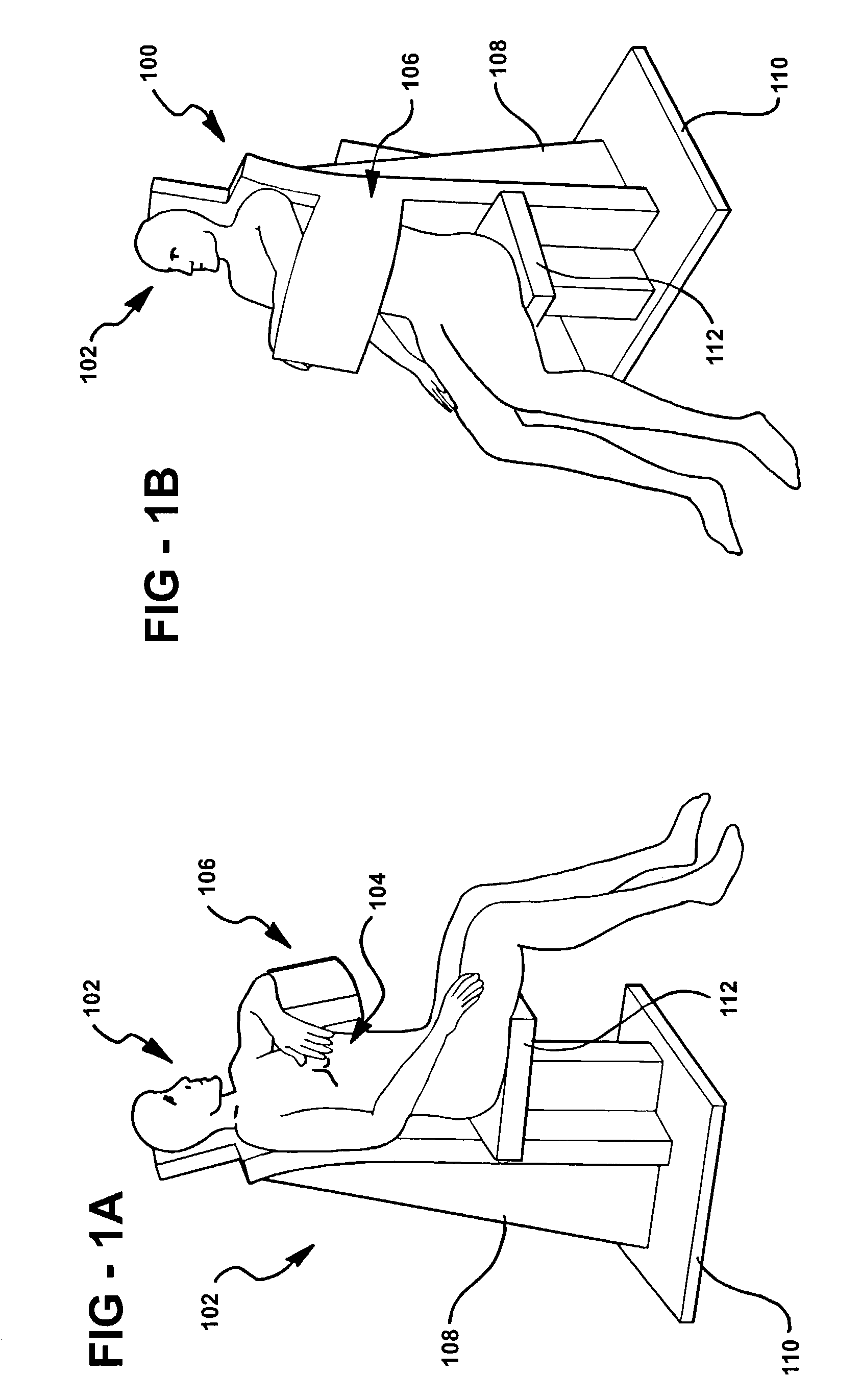Single photon emission computed tomography system
a computed tomography and single photon technology, applied in tomography, instruments, diaphragm/collimeter handling, etc., can solve the problems of imposing significant costs on hospitals providing spect services, limiting their penetration into the community, and limited their availability in physicians' offices
- Summary
- Abstract
- Description
- Claims
- Application Information
AI Technical Summary
Problems solved by technology
Method used
Image
Examples
Embodiment Construction
[0057]Throughout this description, the preferred embodiment and examples shown should be considered as exemplars rather than as limitations on the present invention.
I. General Overview
[0058]The present invention comprises a system for performing single photon emission computed tomography (SPECT). The system includes a radiation detector assembly consisting of a multiplicity of radiation detector modules preferably positioned around an arc, typically over 180°–360°. In-plane (axial) collimation is provided by a movable arc or ring extending over an angular range similar to that of the radiation detector assembly (typically 180°–360°). Cross-plane (longitudinal) collimation is provided by a plurality of vanes or sheets of photon-attenuating material held in a stationary position and oriented parallel to the transaxial plane (perpendicular to the longitudinal axis). Optionally, these vanes may be separated by sheets of a radiolucent spacer material such as Styrofoam® or other plastic. ...
PUM
 Login to View More
Login to View More Abstract
Description
Claims
Application Information
 Login to View More
Login to View More - R&D
- Intellectual Property
- Life Sciences
- Materials
- Tech Scout
- Unparalleled Data Quality
- Higher Quality Content
- 60% Fewer Hallucinations
Browse by: Latest US Patents, China's latest patents, Technical Efficacy Thesaurus, Application Domain, Technology Topic, Popular Technical Reports.
© 2025 PatSnap. All rights reserved.Legal|Privacy policy|Modern Slavery Act Transparency Statement|Sitemap|About US| Contact US: help@patsnap.com



